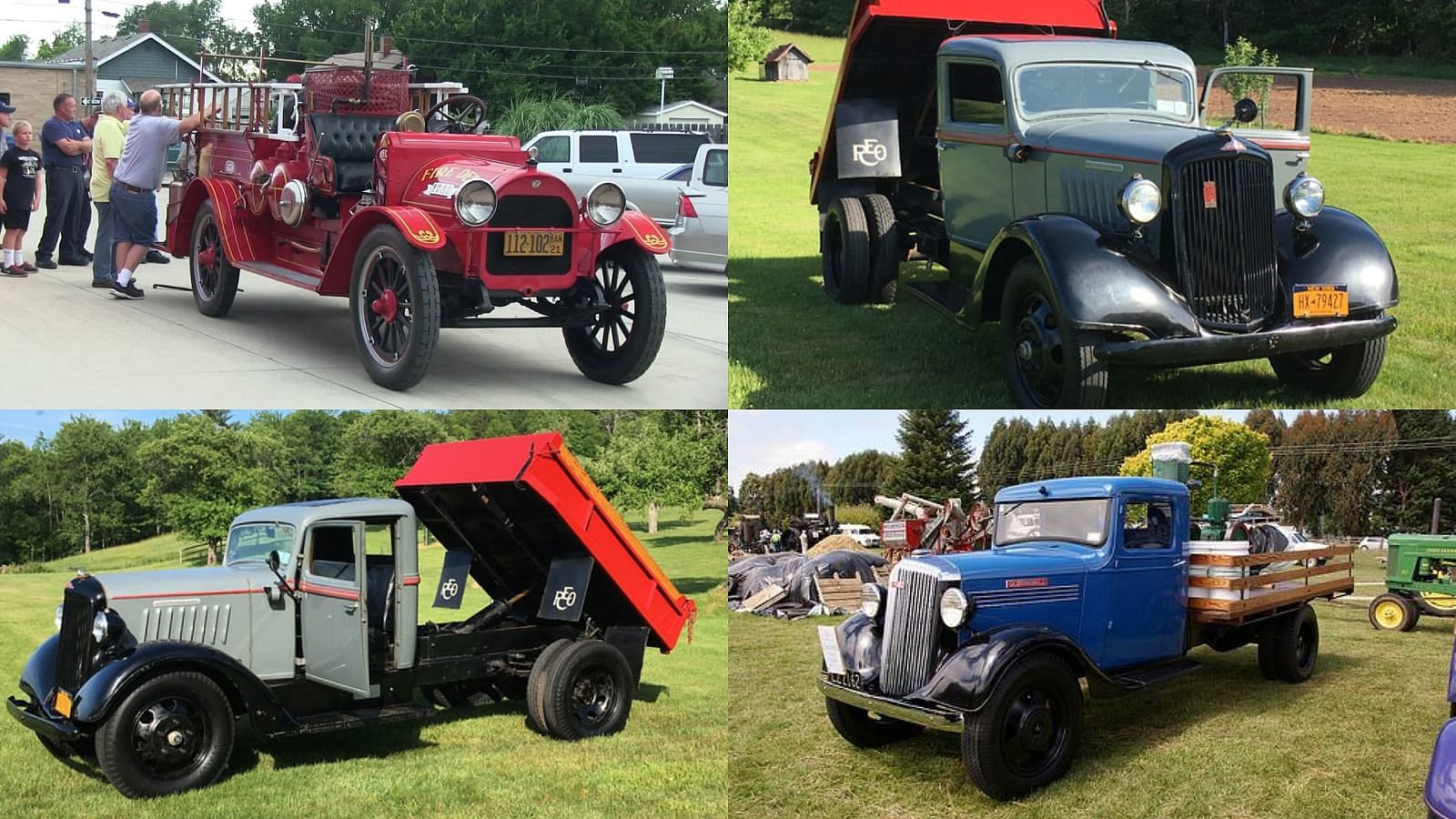The REO Speed Wagon's Journey Through Time
It is pretty common for people to associate the REO with the popular music band REO Speed-Wagon, but it's the initials of its founder Ransom Eli Olds. The company REO, which was formed as a result of Olds's departure from his own company, went on to achieve great heights with its pickup trucks, especially the Speed-Wagon.
Published March 22, 2024

Introduced in 1915, the REO Speed-Wagon introduced advanced technology for its time and established the blueprint for future pickups. For a company that focused mainly on pickups, the REO saw great success in its early years, even outperforming Olds’s former company. However, as times changed, the Speed-Wagon and REO as a company faced a gradual decline, ultimately fading from the forefront of the automotive industry. While it may have gone from the markets, the REO Speed-Wagon truck continues to garner appreciation from critics and enthusiasts alike. So here we take a look at the REO Speed-Wagon, its rise to fame, and its ultimate demise.
The Oldsmobile Legacy

The REO in the REO Speedwagon stands for Ransom Eli Olds, a name you might be familiar with. Apart from his contribution in the early days of the automotive industry, he played a pivotal role in shaping the trajectory of automobiles around the turn of the 20th century. While the REO saw its success, interestingly the reason why the company was formed was because of Olds's stride against his former company. Olds began his journey with the development of steam, electric, and gasoline-powered vehicles in the late 19th century. In 1897, he established the Olds Motor Vehicle Company, later renamed Olds Motor Works. This marked the official start of his automotive career, and he quickly gained recognition for his pioneering efforts. However, Olds faced challenges within his own company and was eventually pushed out by the board of directors. Undeterred, he embarked on a new venture, founding the R.E. Olds Motor Car Company, later rebranded as the REO Motor Car Company.
The Rise
The REO Motor Car Company emerged as a new venture in 1904, under the leadership of Ransom Eli Olds. REO's early years were marked by a commitment to quality and innovation and more importantly, Olds's conquest to outperform his former company. Olds, who had been forced out of his previous company, was determined to build a new legacy. The company began producing automobiles known for their reliability and performance. The introduction of the REO Model B in 1905 was a significant milestone, and it set the stage for REO's ascent.
However, it was the introduction of the REO SpeedWagon in 1915 that would catapult the company to unprecedented success. This light truck, designed to cater to a wide range of transportation needs, became a game-changer in the automotive industry. Its versatility allowed it to be used for both passenger and cargo transport, making it incredibly popular among businesses and individuals. The REO Speed Wagon's success was further fueled by its robust design and dependable performance. It features a powerful engine and a durable chassis, enabling it to handle demanding tasks with ease. This combination of versatility and reliability made it a preferred choice for farmers, merchants, delivery services, and municipal applications. Moreover, the REO played a significant role in serving in the military during World War 1.
The Fall

Despite its earlier successes and pioneering contributions, the company faced a series of challenges and circumstances that ultimately led to its decline. One of the key factors that contributed to the fall of REO was the changing dynamics of the automotive industry during the 1920s. Larger, more established automakers were able to achieve economies of scale and dominate the market, making it difficult for smaller companies like REO to compete effectively. Another challenge that REO faced was its struggle to adapt to shifting consumer preferences.
While the truck REO Speed-Wagon had been a groundbreaking innovation in its time, the market was evolving, and consumers were increasingly looking for passenger cars with greater comfort and style. REO's focus on light trucks and commercial vehicles meant that it was somewhat out of step with the changing demand for consumer automobiles. The 1930s were the years when the inevitable fall began, as REO ceased passenger car production altogether and focused solely on commercial vehicles. While this move allowed the company to survive for a time, it was unable to regain the level of success it had achieved in its earlier years. Ultimately, in 1954, after several decades of struggle, the REO Motor Car Company ceased operations.
Conclusion
Today, while the name "REO" might evoke thoughts of a rock band, there was a time when this name had a huge significance in the automotive world. Despite early challenges and personal setbacks, the story of the REO Motor Car Company and the iconic REO Speed-Wagon trucks reflects the indomitable spirit of Ransom Eli Olds. The company saw a lot of success in its early years, especially in the commercial pickup segment. However, the fall of REO, though inevitable, cannot diminish its enduring legacy. Overall, the REO Speed-Wagon remains an icon of its time.
Write a comment
Comments
No Comments Yet








